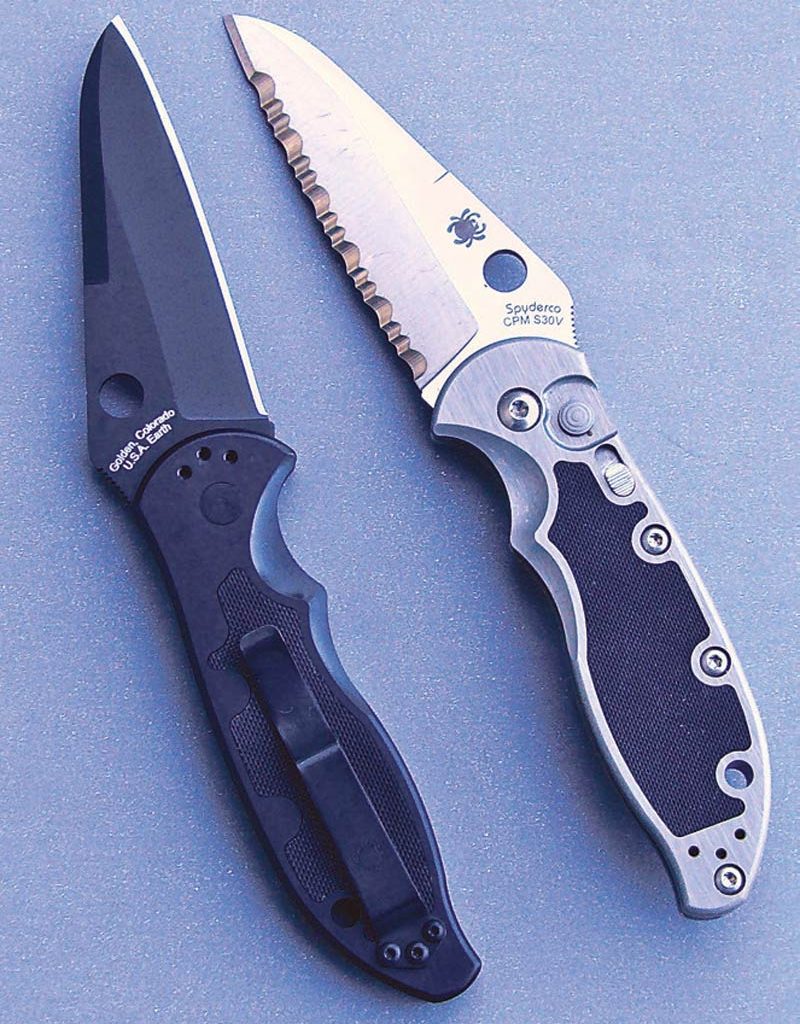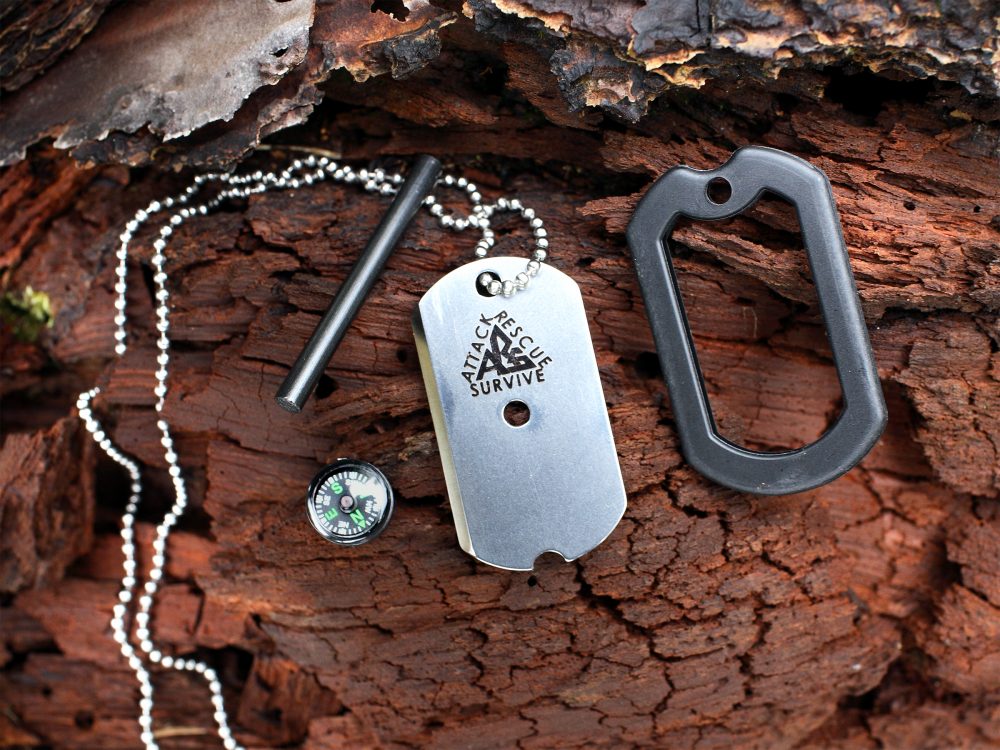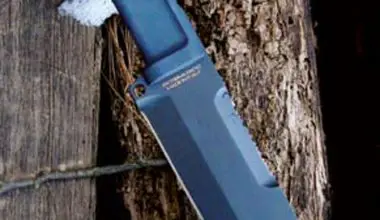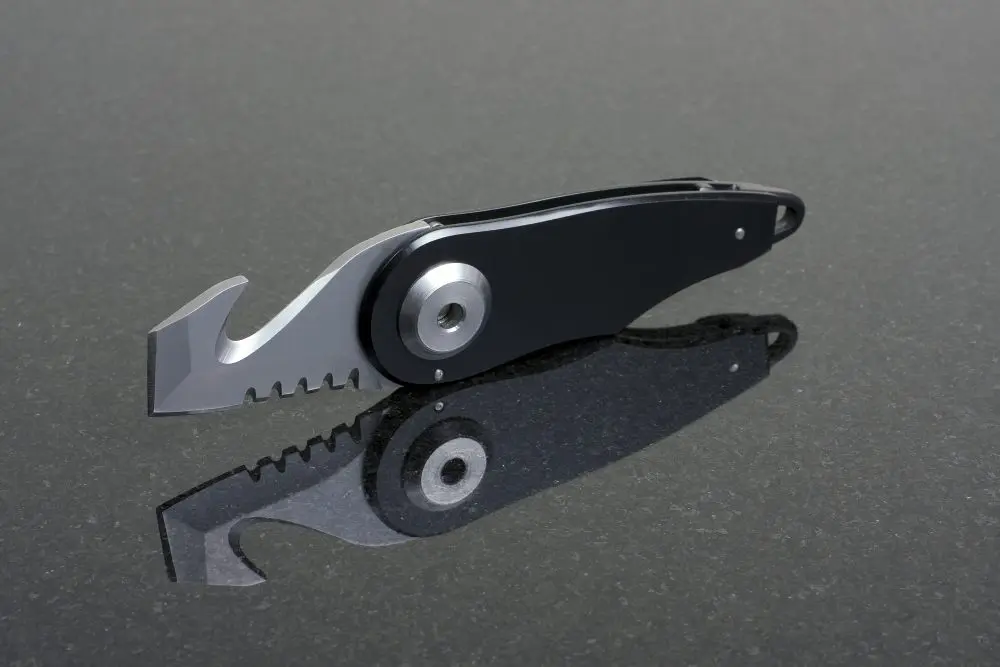
A valid argument can be made for the usefulness of automatic knives for tactical law enforcement officers and some military personnel. An equally valid argument can be made for their usefulness for some fire and rescue personnel.
Don’t get me wrong when I talk about valid arguments, as I think most laws against automatic knives are ridiculous, since anything evil that can be done with an auto can be done as effectively (or more so) with a fixed-blade knife or standard folder. I think the laws came about in many cases because too many lawmakers had seen Rebel Without a Cause during their formative years!
Still, it can be argued that an auto is more useful for those who rappel, parachute, cut seatbelts while applying a compress to a wound with the other hand, etc. Having said that, if you ask law enforcement or military personnel why they carry an auto, many will discuss the advantages of one-handed opening in their mission or assignment, but if pressed enough, some will answer, “Because I can!” That works for me.
When I evaluate autos, I normally do so based on law enforcement and military applications. They can obviously be used for myriad other tasks by civilians where legal, but there’s the rub. In many jurisdictions, “switchblade” laws are incredibly confusing.
Spyderco’s Embassy autos are typical Spyderco products—well-designed and well-made. The Embassy is also very safe and carries readily. It is not a heavyduty military auto of the type designed to fulfill the same tasks as a heavy-duty folder. Instead, it is a companion blade easily carried in a tunic pocket, on a vest, or in a rear pocket for patrol officers to use in weapon retention or other tasks. Closed, the Embassy auto is only 49/32 inches overall and open 73/8 inches.
The saber-ground CPM S30V blade is 31/8 inches and weight is 3.7 ounces. The Embassy is also slim at about 2/5 inch. There is also a lanyard hole, a handy feature for users who may rappel, parachute, operate in small boats, etc. The hard-anodized aluminum handle seems durable, and the G-10 scale inlay gives a very sure grip.
I mentioned that it is a safe knife, a factor I consider important in an auto to prevent inadvertent opening. First, there is a dished area around the release button that makes it much more difficult to open the blade accidentally. There’s also a sliding safety that must be pushed/pulled to the rear to allow the release button to operate. This movement makes the safety less likely to work off than if it were released with a forward push. The safety may also be used to lock the blade in the open position by pushing the safety forward.

I tried operating the Embassy while wearing tactical gloves. I found it relatively easy to operate the safety and push the button to release the blade, but it took me awhile to operate the button that closes the blade while wearing gloves. Under stress it would be more difficult. The safety is raised slightly, which helps when wearing gloves. The button and safety are located for righthanded operation, but it is relatively easy to deploy the blade left-handed using the forefinger to push the safety off and depress the release button.
The black pocket clip may be mounted in any one of three positions to suit the user. This allows carry for easiest access for various uses, including weapons retention. Although there is the capability of mounting the clip on the same side of the handle as the button blade release—though at the base of the handle—I tried this and found this location could impede quick operation of the blade.
There are four basic configurations of the Spyderco Embassy: Satin blade or Black DLC (Diamond-Like Carbon) blade, and serrated blade or plain blade in any combination. The black blade will hold more appeal for tactical users, while the choice of plain or serrated blade will be influenced by its intended use.
If the Embassy is carried for cutting rappel rope, seat belts, and harnesses, the serrated blade is probably the best choice. I tried it on heavy rappel rope and it cut through very quickly. If carried as a backup blade for weapon retention deployment or other tasks, the plain blade is likely the best choice. To tell the truth, though, the serrated blade could be wicked if used for self-defense. I’ve been cut with a serrated blade, and it ripped the flesh quite well. A French emergency-room doctor who saw a lot of knife cuts told of some very serious ones from serrated blades.

Three friends of mine—one U.S. tactical LE, one U.S. military special ops, and one foreign military special ops— have avoided injury or worse using their automatic knives to cut themselves free from ropes or lines (one while in the water), and my experience is that the serrated blades cut through these materials faster.
The Embassy from Spyderco offers a very useful small auto for a variety of tasks. I’ve been using some of my Spydercos for well over a decade, and they still take an edge and operate well. Since autos are specialized knives and may require extra effort to purchase, users want their auto to last. I think the Embassy will. The Spyderco name helps insure that.
To order an Embassy auto, you must go to Spyderco’s website and download a form establishing that Spyderco can legally sell you the knife. This form has to be completed and sent to Spyderco along with a copy of an ID that meets the criteria stated. To make the effort worthwhile, Spyderco offers a discount to law enforcement and military personnel who order their autos or nonautos direct.






